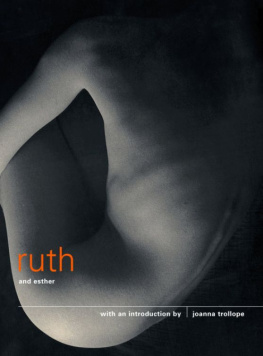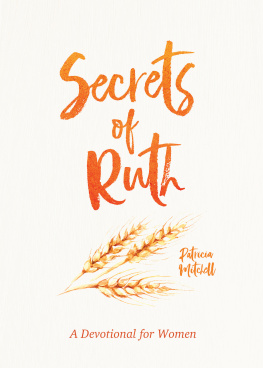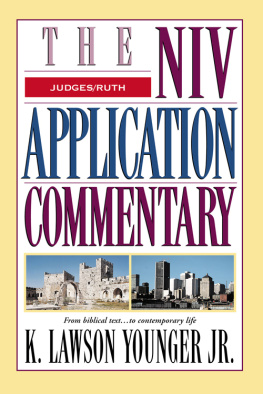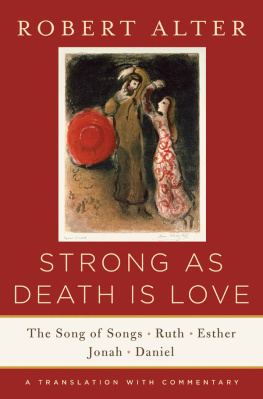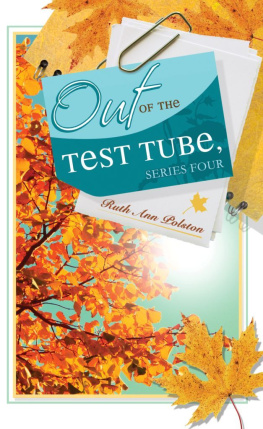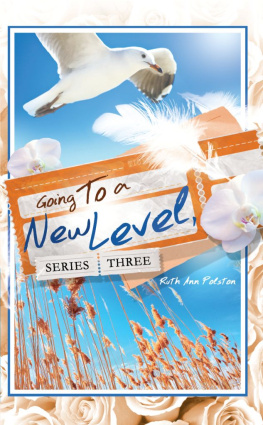Joanna Trollope - The Books of Ruth and Esther
Here you can read online Joanna Trollope - The Books of Ruth and Esther full text of the book (entire story) in english for free. Download pdf and epub, get meaning, cover and reviews about this ebook. year: 1999, publisher: Canongate Books, genre: Art. Description of the work, (preface) as well as reviews are available. Best literature library LitArk.com created for fans of good reading and offers a wide selection of genres:
Romance novel
Science fiction
Adventure
Detective
Science
History
Home and family
Prose
Art
Politics
Computer
Non-fiction
Religion
Business
Children
Humor
Choose a favorite category and find really read worthwhile books. Enjoy immersion in the world of imagination, feel the emotions of the characters or learn something new for yourself, make an fascinating discovery.
- Book:The Books of Ruth and Esther
- Author:
- Publisher:Canongate Books
- Genre:
- Year:1999
- Rating:3 / 5
- Favourites:Add to favourites
- Your mark:
- 60
- 1
- 2
- 3
- 4
- 5
The Books of Ruth and Esther: summary, description and annotation
We offer to read an annotation, description, summary or preface (depends on what the author of the book "The Books of Ruth and Esther" wrote himself). If you haven't found the necessary information about the book — write in the comments, we will try to find it.
This volume presents the texts of two Old Testament books, Ruth and Esther, two of the very few biblical stories to focus on women. Ruth in particular has attracted much attention from feminist scholars, though it reinforces age-old notions of male dominance. With an introduction by Joanna Trollope
The Books of Ruth and Esther — read online for free the complete book (whole text) full work
Below is the text of the book, divided by pages. System saving the place of the last page read, allows you to conveniently read the book "The Books of Ruth and Esther" online for free, without having to search again every time where you left off. Put a bookmark, and you can go to the page where you finished reading at any time.
Font size:
Interval:
Bookmark:
The Authorised King James Version of the Bible, translated between 160311, coincided with an extraordinary flowering of English literature. This version, more than any other, and possibly more than any other work in history, has had an influence in shaping the language we speak and write today.
Twenty-four of the eighty original books of the King James Bible are brought to you in this series. They encompass categories as diverse as history, philosophy, law, poetry and fiction. Each Pocket Canon also has its own introduction, specially commissioned from an impressive range of writers, to provide a personal interpretation of the text and explore its contemporary relevance.
Author of eagerly awaited and bestselling novels often centredaround the domestic nuances and dilemmas of life in contemporaryEngland, Joanna Trollope is also the author of a number of historical novels and of Britannicas Daughters, a study of women inthe British Empire. In 1988 she wrote her first contemporary novel, The Choir, and this was followed by A Village Affair, A Passionate Man, The Rectors Wife, The Men and the Girls, A Spanish Lover, The Best of Friends, Next of Kin and mostrecently, Other Peoples Children. She lives in Gloucestershire.
At first glance, it would seem natural, perhaps, to pair off the books of Ruth and Esther since they are the only two books in the Old Testament with women as their central characters, their heroines. At even a second glance, it might be tempting to see the two stories as applauding the courage and fortitude of women, a kind of remarkable early accolade to feminism. But a third glance reveals the reality. These two stories may star women, but only against the conventional biblical background of supreme male power; and if the women are celebrated, it is merely because of their ingenuity in exploiting that power. We are dealing it seems, with traditional, accepted romantic heroines except that we are not. Love may come into both stories, lust even, but the loyalties the women in these stories show is most fiercely directed in the one case to another, older woman, and in the second case, to a race, to a people. If these women had merely been feisty examples of romantic femininity, they would not have taken such a hold as they have, on Jewish and Christian minds and hearts down the ages. It is their breadth and their differences that have given them their enduring power.
There are thirty-nine books in the King James Old Testament, from the first book of Moses, called Genesis, to Malachi. In most bibles, this works out at about a thousand pages. And for the first five hundred pages, we know roughly where we are; not just following the revelation of Gods will and purpose for mankind, but also pursuing the extraordinary story of the rise and fall of the nation of Israel, from the call of Abraham to the point in the fourth century BC when the Jews eventually emerged as a distinct religious community settled in a tiny corner of the Persian Empire.
So far, so reasonably manageable. But after the book of Nehemiah, the pattern disappears. The continuity of the story fragments and diffuses into something different and less accessible into the (very broadly speaking) literature of the Hebrew people, into their prophecies and poetry, their wisdom and stories. Instead of reading the books of the Old Testament in sequence, we can read them individually. They arent exactly random but they arent, because of their separate natures, in narrative or development of thought order, either.
Some books, like those of the prophets, illuminate the history that has gone before as well as foretell the future. Some, like Psalms, from which hymns were used in Temple services, describe the nature and mood of Jewish worship after the exile of its people. And some Ruth and Esther among them are stories that, for various reasons, plainly became interwoven into Jewish life and faith, into its attitudes as well as its rituals.
Like all stories at least stories that endure the stories of Ruth and Esther are metaphors. At one level they are simple narratives one romantic, one dramatic but at another they are illustrations, or images, of human behaviour, human attitudes, human arbitrariness, human trial and error, human failing, human (with divine assistance) triumph. We may not be able to identify with the time and place, but in some way, however small, we can identify with some aspect of the human condition.
They are also in violent contrast to one another. Ruth is a story of simplicity and gentleness; Esther one of hatred and savagery. Both books were of course written pre-Christ, but only the book of Ruth, with its quiet virtues, its extolling of compassion and tolerance and honourable conduct, found favour with later Christian thinking. The name of God is invoked, called upon and blessed. Esther, on the other hand, never even mentions the name of God. Yet both have their place, and particular point, in this rich and amazing history of a remarkable people and their remarkable faith.
The book of Ruth, in the authorised version, now sits between Judges and the first book of Samuel. The Greek translators put it there because there is reference, in the first chapter, to the story having taken place in the days when the judges ruled. It could have been written before the Exile (598 BC ), it could have been written some time after, but its exact date is nothing like as important as the question raised by the mere fact of its inclusion in the first place. Its a charming story, certainly, with an equally charming, peaceful, pastoral setting, among the Bethlehem barley fields at harvest time (a welcome relief after all the blood and thunder of Judges). But its also something more significant and more muscular because it suggests that not all Jews of the period believed in the remorselessly tough racial laws that followed their return from exile the ban on mixed marriage, the segregation of their people from any other, the open hostility to foreigners.
Ruth, you see, is not a Jew. She is a Moabitess. She marries a Jew who has come to live in Moabite country and, after his death, makes her immortal speech to her Jewish mother-in-law, Naomi: Whither thou goest, I will go; and where thou lodgest, I will lodge; thy people shall be my people and thy God my God; where thou diest will I die and there I will be buried: The Lord do so to me and more also, if aught but death part thee and me(1:16-17).
Naomi takes Ruth home to Bethlehem. To sustain them both, Naomi sends Ruth out to glean barley after the reapers a privilege accorded to widows and the poor in a kinsmans field. Whose, demands the immediately interested kinsman, damsel is this? Soon, after some delicate moonlight manoeuvrings, she is his, Moabite or not. And soon again, she, as his wife, bears him a son. The son is named Obed. Obed was the father of Jesse who in turn was the father of the great king, David. And the great King David honoured almost as much as Moses was the grandson, not just of Obed, but naturally of his wife too, who was a Gentile. It is as if the storyteller of Ruth is saying, gently but firmly, either that even the blood of the great king was diluted or more likely that Gods chosen people must make room for others who truly wish to join them, such as Moabites and other Gentiles.
This tiny hint of racial intolerance is the only link between the tender book of Ruth and the fierce book of Esther; both the Jewish canon and the Christian church have expressed huge reluctance in accepting Esther, and Martin Luther bluntly wished it had never been written.
Font size:
Interval:
Bookmark:
Similar books «The Books of Ruth and Esther»
Look at similar books to The Books of Ruth and Esther. We have selected literature similar in name and meaning in the hope of providing readers with more options to find new, interesting, not yet read works.
Discussion, reviews of the book The Books of Ruth and Esther and just readers' own opinions. Leave your comments, write what you think about the work, its meaning or the main characters. Specify what exactly you liked and what you didn't like, and why you think so.

